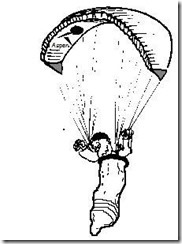Happy New Year everyone
Cognitive Bias
WTF’s that? In simple terms a cognitive bias is a systematic error in thinking that occurs when people are processing and interpreting information in the world around them and affects the decisions and judgments that they make. Whenever we launch, this is the culmination of a sequence of decisions that may have begun with a weather forecast several days ago. While we are flying we are constantly taking in information, processing it and making decisions and judgements based on this data, so some understanding of how cognitive bias can leas us into bad choices may be useful.
Attentional and Anchoring biases will lead us into fixing on the first bit of information we get – e.g. the forecast for 3 days ahead shows light winds, and not looking again; or only paying attention to some things and ignoring others – such as a nice 10 mph breeze on the hill but not looking at the 20+ mph wind at 45 degrees 500’ higher. A Confirmation Bias can lead us into only looking at sources of data that confirm our original judgement.
Optimism Bias is fairly self-explanatory, and links with the Dunning-Kruger effect which describes how people believe they are smarter and more competent than they really are (we all know that person, don’t we?), leading to over-confidence.
Halo effect – when you see your favourite skygod having fun in the sky doesn’t mean it’s OK for you.
Do you attribute your mate’s great flight to just luck, while your success is pure skill; or your bomb-out was someone else’s fault for distracting you? If you shout at another pilot for being too close, are you always sure you’re in the right? Or if you are the one getting the abuse, do you analyse the situation calmly afterwards to see if you could have done something differently?
This is just a sample of the complex web of biases that psychologists study to try to guide people into better decision-making.
Challenging your biases. Even the psychologists accept that despite knowing all about them, they are just as likely as anyone to be led into their traps, but the ability to recognise them goes a long way towards being able to remove the from your decision making. What are some factors you have missed? Are you giving too much weight to certain factors? Are you ignoring relevant information because it doesn't support your view? Thinking about these things and challenging your biases can make you a more critical thinker. Be aware of your over-confidence – can you dispassionately analyse your own strengths and weaknesses? Identify the risks you take – have they become just bad habits that you’ve got away with, so far? Set aside time to consider your decisions – good and bad.
Here’s a link to a video of a flying encounter. The pilot doing the filming later spoke to the chap on the blue and yellow wing who said he thought there was plenty of room based on his “20-years’ experience relative to an obvious novice”. I leave it to you to think about the cognitive biases that may be in play here.
Tight lines, everyone.
Brian
